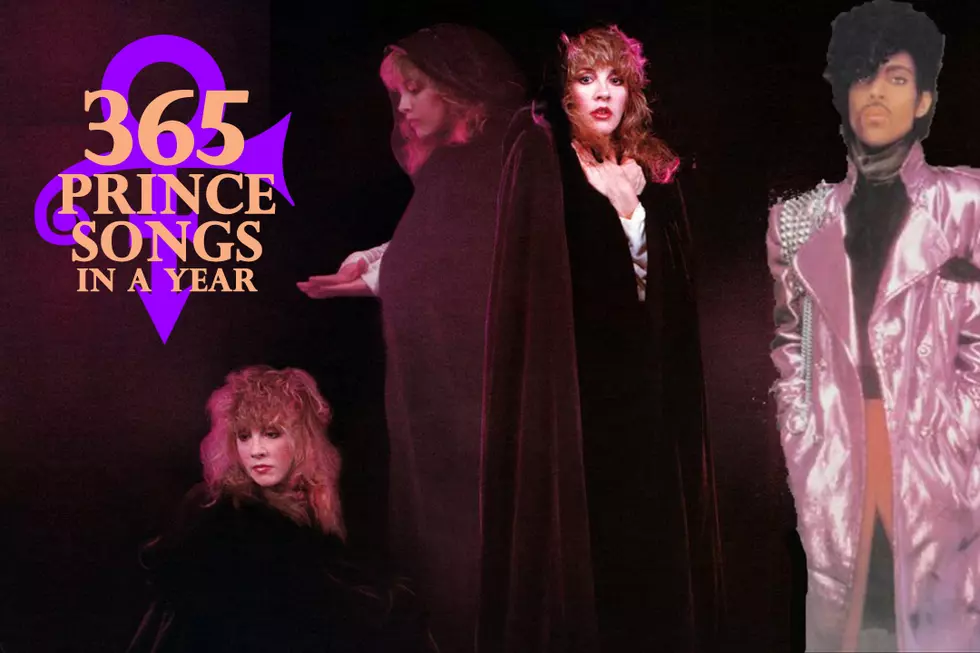‘Last Heart’ Allowed Eric Leeds to Shine Again – Eventually: 365 Prince Songs in a Year
To celebrate the incredibly prolific, influential and diverse body of work left behind by Prince, we will be exploring a different song of his each day for an entire year with the series 365 Prince Songs in a Year.
Eric Leeds was there when Prince reached his first collaborative peak, and also there when he threw all of that away in search of his next musical phase. "Last Heart," a long-unreleased song from Prince's shelved Dream Factory project with the Revolution, tells that story in microcosm.
Initial sessions for "Last Heart" took place in 1986, during the Revolution's Hit & Run tour in support of Parade, with Leeds on sax and Prince's one-time girlfriend Susannah Melvoin on backing vocals. Already shifting back to his earliest one-man recording style, Prince is actually featured on every other instrument – including a very prominent bass line.
"I had a lot of opportunity to hear him play the other instruments to a degree that others did not, at jam sessions and long sound checks," Leeds told the Pittsburgh Post-Gazette. "Before Paisley Park was built, for the first several years, when I was working with him, we would do most of our recording in L.A. at Sunset Studios. So, it wouldn't be unusual for [trumpeter] Matt [Blistan] and I to be out in L.A. for weeks at a time. He would block out a studio for maybe a month, and we’d be in there almost every day. ... We would just jam and he would float between instruments, and those were the opportunities when you really got to hear Prince play."
Despite that obvious facility across a wide musical spectrum, the funky, jazz-laced "Last Heart" illustrates how Prince always stepped back to let Leeds shine.
"I played an instrument that he did not play and, from the beginning, it gave me a much greater opportunity to define and develop my own role in his music than for any of the other people in his band," Leeds once told the Last Miles. "Prince looks at life as if it's a movie. He's the star, he's the director, he's the producer, he's the scriptwriter, he's the costume designer, he's the special effects designer. Basically, he likes to put everybody he knows in a role in his movie and if you're basically willing to allow yourself to be handled like that, fine. It kinda gave me an opportunity to develop my own character within his movie than I think it did for some of the other players in his bands."
"Last Heart" was slated to be part of a new fusion-focused double album follow up to Parade through the summer of 1986, but Prince ultimately scrapped the idea – and then the Revolution itself. A subsequent project called Crystal Ball then morphed into the album Sign O' the Times, which ended up including eight Dream Factory-era songs. "Last Heart," however, wasn't one of them. Instead, it would find a home – along with four other tracks from this time period – on a 1998 set of leftovers also called Crystal Ball.
At this point, Prince had left major labels behind. That inspired him to try out a forward-thinking new retail idea: Becoming the first artist to sell an entire album online. Initially, however, his ad-hoc distribution plan was simply overwhelmed by demand for items from Prince's legendary vault. Orders began in May 1997, but the first copies didn't arrive until January of the next year.
Prince ended up offering Crystal Ball through old-fashioned channels. Inside, fans sound a string of classic-era items from 1985-86, along with a song from 1983 ("Cloreen Bacon Skin"). Newer material from 1993-96 rounded out Prince's second consecutive triple album, after 1996's Emancipation.
Leeds contributed to that project too, as well as 1992's The Love Symbol Album and 2003's N.E.W.S., among others. But his principal period of influence was between 1985-90, when he had a profound impact on Prince's sound and vision. "Last Heart" is a great example of the fizzy sense of adventure that Leeds engendered – fitting since his relationship with Prince was actually founded on spontaneity.
Upon their first meeting, "Prince said to me, 'I’ve got four or five tracks already done for this project. If you would like to listen to them for a few days and come up with a few ideas,'" Leeds told the Post-Gazette. "And I wasn't feeling cocky and arrogant or anything, but I said, 'I'm fine with just diving in and starting right now if that's what you'd be interested in doing,' and Prince smiled at me and said, 'Cool, let's go.'"
Leeds, who released a series of jazz records for Paisley Park Records (including two as part of Prince's Madhouse side project), rarely spoke to his old boss late in life. The ever-enigmatic Prince, in fact, stopped by during Leeds' performance at Minneapolis' Dakota Club just a few months before accidentally overdosing. He chose not to join Leeds on stage. Instead, Prince remained in a private dining area, watching his old collaborator via closed-circuit television.
Prince Albums Ranked From Worst to Best
More From Diffuser.fm









